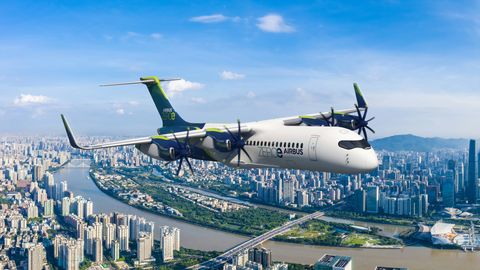Airbus demonstrates A330neo performance during high-altitude test campaign

Airbus’ A330-900 flight-test aircraft – MSN1795 / F-WTTN – recently flew to Toluca in Mexico, and then to La Paz in Bolivia. There it conducted a fortnight long ‘Hot and High’ flight test campaign to prove aircraft and engine performance in high-altitude, warm and humid airport environments.
Toluca airport lies at an altitude of 9,186ft (2,800m), while La Paz airport is at 13,300ft (4,054m).
This is not the first time that Bolivia is selected by Airbus to test its aircraft. The country’s extreme hot climate and high altitude are ideal for testing the design limits of its aircraft under such operational conditions.

Extending the A330neo’s operation envelope
However, this is the first time that this particular aircraft – the A330neo – had operated from airports at such high altitude, and this is part of Airbus’ incremental envelope extensions for the aircraft. This will be especially beneficial for airline customers whose networks require such operations.
Overall, the main objective of this certification exercise is to expand and certify the wide range of airports from where the A330neo can operate. Up to now, the A330neo has been certified to operate at airports that are up to 8,000ft elevation. However, following certification approval, which is expected in Q1 2025, the aircraft will be able to serve airports that are up to 12,500ft in elevation. Such locations include: Tibet (eg. Lhasa); Central and South America (eg. Bogota, Toluca, Quito and Mexico) and in Africa (eg. Addis Ababa).
Wide range of tests
While the primary focus of the tests conducted is to evaluate take-off and landing performance – especially since the increased altitude reduces engine thrust levels, the aircraft also conducted local flights to evaluate climb and approach performance. Other tests included multiple engine starts, system behaviour verification, low-speed taxi and rejected take-offs. In the case of the engine starts – a crucial part of the campaign – the tests included special instrumentation to measure the starter air pressure, which would be affected by the high airport altitude.
Large on-site Airbus team participation
During the campaign – which took place between 18th and 30th March – a team comprising around 40 Airbus experts participated in the planning, logistics, maintenance, local liaison (airports, ATC, authorisations, permits etc), tests-support, execution, analysis activities – and flying of course. The early test results already reflect the good performance and behaviour of both the aircraft and its Trent 7000 engines.
Capt. Franck Busnel, the mission leader as well as being one of the test pilots, sums-up the campaign: “By extending the envelope of operation of the A330neo, which was successful, we can show to the operators, the current one or the new ones, that the aircraft reaches the same capability of the A330ceo in term of high-altitude operations – and with the advantage that the A330neo is much more fuel efficient.”



